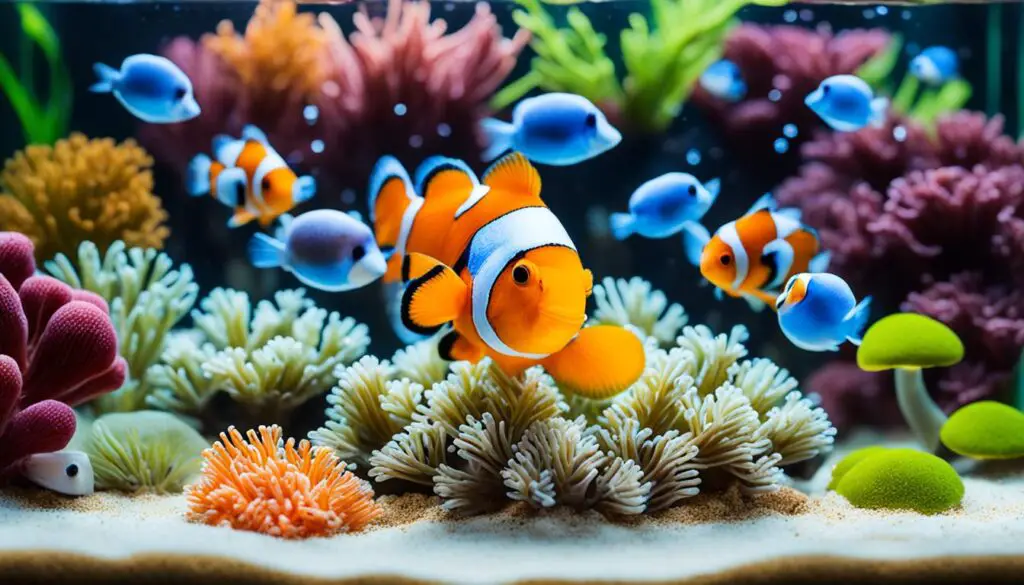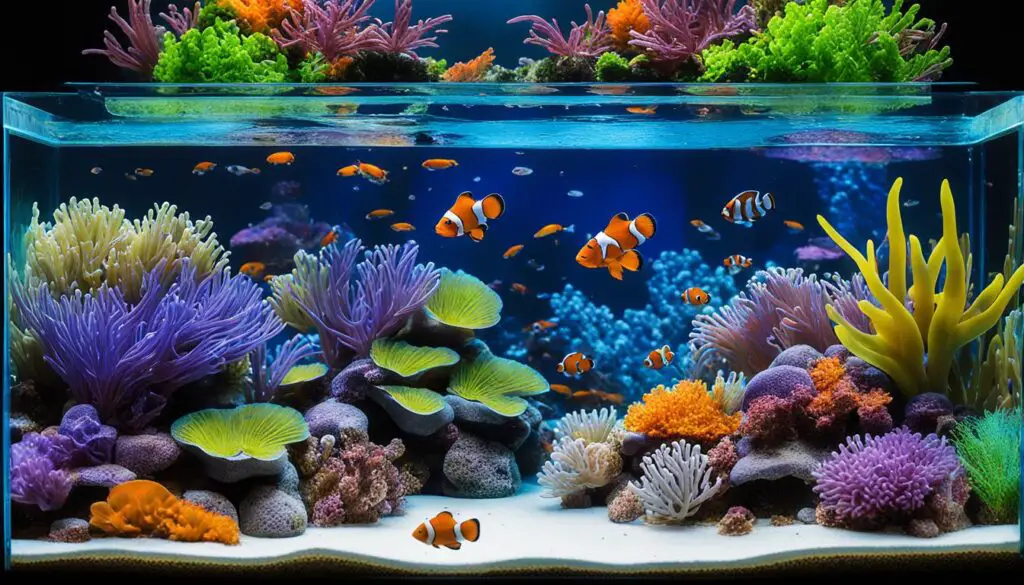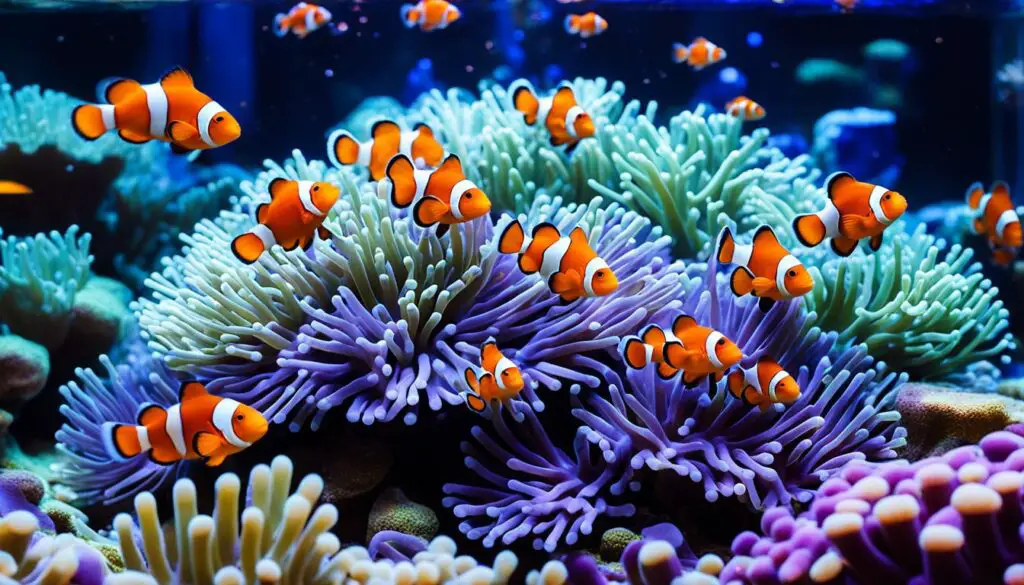What Foods Can Hermit Crabs Eat

Introduction
What Foods Can Hermit Crabs Eat: Hermit crabs, fascinating and quirky crustaceans, are popular pets in the world of marine enthusiasts. These unique creatures are not only captivating to watch but also relatively low-maintenance, making them a favorite for novice and experienced pet owners alike. Understanding what foods hermit crabs can eat is crucial in providing them with a balanced and healthy diet.
In the wild, hermit crabs are opportunistic scavengers, crabs feeding on a wide variety of food sources found along the shores and seabeds. Their adaptable nature extends to their diet, allowing them to consume both plant and animal matter. To mimic their natural dietary habits, it’s essential for hermit crab owners to offer a diverse menu.
The diet of hermit crabs primarily consists of fruits and vegetables. They enjoy a range of options, including apples, bananas, carrots, spinach, and more. These foods provide essential vitamins, minerals, and fiber to support their well-being. However, hermit crabs also require a source of protein, which can be met through options such as dried shrimp, fish flakes, or even cooked eggs.
To ensure the health and longevity of your hermit crab companions, it’s vital to understand their dietary needs and provide them with a well-rounded selection of foods. This guide will explore in detail the foods that hermit crabs can eat, helping you create a nutritious and enticing menu for your aquatic friends.

What do hermit crabs eat for food?
Hermit crabs are opportunistic, scavenging omnivores that feed upon a wide variety of foods such as fruit, vegetables, insects and even carrion.
Hermit crabs are omnivorous creatures with a diverse palate. Their diet primarily consists of both plant and animal matter, reflecting their adaptability to various coastal environments. These crustaceans possess a keen sense of smell, which aids them in locating potential food sources. They scavenge for fallen leaves, fruits, and decaying wood in their natural habitats, relishing the organic detritus that accumulates along shorelines. Additionally, hermit crabs are known to be opportunistic feeders, consuming small invertebrates, such as insects and mollusks, if the chance arises.
In captivity, providing a balanced diet is crucial for their well-being. Commercial hermit crab food, which usually includes a mixture of pellets, dried fruits, and nuts, serves as a convenient option. This can include leafy greens, small pieces of fruits like apple or bananas, and even bits of cooked egg or fish for added protein. Providing a calcium source, such as crushed eggshells or cuttlebone, is vital for their exoskeleton health and overall vitality.
Maintaining a varied and nutritious diet ensures these fascinating creatures not only survive but thrive in their environments, showcasing their remarkable adaptability and resilience as nature’s consummate scavengers.
What can you feed a hermit crab?
Hermit crabs eat pellet food, supplemented with vegetables and fruit. Hermit crabs take small bites and eat very slowly, usually at night. Small crabs sometimes don’t have claws big enough to grab onto pellet-type food. Feed small crabs 1 teaspoon of powdered hermit crab food, or pellets crushed into powder.
Hermit crabs are versatile eaters, consuming a wide array of both plant and animal matter. In their natural habitat, they scavenge for fallen leaves, fruits, and decaying wood along shorelines. They are also opportunistic feeders, preying on small invertebrates like insects and mollusks. In captivity, replicating this diverse diet is crucial for their well-being.
A balanced hermit crab diet typically includes commercial crab food, which consists of pellets, dried fruits, and nuts. Leafy greens like lettuce and kale provide essential vitamins and minerals, while small pieces of fruits like apple or banana offer necessary sugars and fiber. Additionally, occasional servings of cooked egg or fish provide valuable protein.
Equally important is the provision of a calcium source, like crushed eggshells or cuttlebone, which supports their exoskeleton health. A well-rounded diet is vital for their overall vitality and longevity. Ensuring a consistent and diverse menu enables these intriguing creatures to not only survive but thrive, exemplifying their remarkable adaptability and resilience in their habitats.
What is a hermit crabs Favourite food?
Hermit crabs thrive on diverse food, so try to add a different three to five ingredients to each mix you make. Each mix should include grain, animal protein, fat (seeds and nuts), and maybe some calcium. Sweet things like dried fruit are a bonus for your crabs and should be used sparingly.
While hermit crabs are known for their versatility in diet, they do exhibit preferences for certain types of food. Among their favorites are fresh fruits, particularly those with a slightly sweet and juicy profile. Fruits like apples, bananas, and grapes are often met with enthusiasm. These offerings provide essential sugars and hydration, contributing to their overall health.
Moreover, hermit crabs have a penchant for leafy greens, with options like lettuce and spinach being popular choices. These greens supply vital vitamins and minerals necessary for their well-being. Additionally, they relish protein-rich sources such as small pieces of cooked egg or fish, which support their growth and vitality.
Interestingly, some hermit crabs may display individual preferences, with certain individuals favoring specific foods over others. It’s worth noting that variety remains key in their diet. Offering a diverse range of foods ensures that they receive a balanced and nutritious intake, mirroring their natural foraging habits.
While hermit crabs may have preferred food items like sweet fruits and leafy greens, a diverse diet comprising fruits, vegetables, and protein sources is essential for their optimal health and well-being.
Do hermit crabs eat fruit?
You can include vegetables, meat, fish, nuts, and fresh fruit in their daily diet since hermit crabs are omnivores so this often allows you to easily feed your hermit crab food straight from your refrigerator.
In their natural habitat, hermit crabs are opportunistic feeders and have been observed consuming various types of fruits that have fallen to the forest floor. They are particularly drawn to fruits with a soft texture, such as apples, bananas, and grapes. These fruits provide essential sugars, vitamins, and hydration, which are beneficial for the hermit crab’s overall health and vitality.
In captivity, providing a balanced diet is crucial for their well-being. Commercial hermit crab food often includes dried fruits as a component. Offering small pieces of apple, banana, or other fruits provides important nutrients and helps mimic their natural foraging behavior.
It’s important to remember that while fruit is a valuable part of a hermit crab’s diet, it should be offered in moderation alongside a variety of other foods to ensure a well-rounded and nutritious intake. This diversity in their diet reflects their adaptability as scavengers in the wild, showcasing the fascinating range of foods these creatures can consume.
Is there anything hermit crabs can eat?
In the wild, land hermit crabs are omnivores, meaning they eat both plant and animal matter. In captivity, their diet should be based on a balanced commercial food supplemented with a variety of fresh foods and treats.
Hermit crabs possess a diverse and adaptable diet, able to consume a wide range of both plant and animal matter. In their natural habitat, they are opportunistic feeders, scavenging for fallen leaves, fruits, and decaying wood along shorelines. They also prey on small invertebrates like insects and mollusks.
In captivity, replicating this varied diet is essential for their well-being. Commercial hermit crab food, comprising pellets, dried fruits, and nuts, provides a convenient base. This can include leafy greens like lettuce and kale, as well as small pieces of fruits like apple or banana for necessary sugars and fiber. They also benefit from occasional servings of cooked egg or fish for protein.
A vital component of their diet is a calcium source, like crushed eggshells or cuttlebone, which supports their exoskeleton health. It’s imperative to avoid toxic foods, such as processed human foods or those with high salt content. Ensuring a consistent and diverse menu enables these intriguing creatures to thrive, showcasing their remarkable adaptability and resilience in their habitats. Providing a well-rounded diet not only ensures their survival but also contributes to their overall vitality and longevity.
Do hermit crabs need access to freshwater and saltwater for hydration?
Hermit crabs require access to both freshwater and saltwater for proper hydration and overall well-being. In their natural habitats, they are often found in coastal regions where they can easily access both types of water sources.
Freshwater is essential for drinking and maintaining their internal balance of fluids. It also helps with various bodily functions, including respiration and digestion. Providing a dish of dechlorinated freshwater in their enclosure is crucial. It should be shallow enough for the crab to easily access without the risk of drowning.
Saltwater, or marine water, is equally important for hermit crabs. It provides essential minerals and salts necessary for their exoskeleton health. A separate dish of marine-grade saltwater, ideally made with marine salt mix and dechlorinated water, should be available for them to bathe in. This helps regulate their osmotic balance and supports molting, a critical process for their growth and development.
Ensuring a consistent supply of both freshwater and saltwater is imperative for the well-being and longevity of hermit crabs kept in captivity. Monitoring water quality and cleanliness is also vital to prevent any potential health issues. Providing access to these two types of water replicates their natural habitat and supports their physiological needs.
Are there specific foods to enhance hermit crab coloration?
While there are no specific foods that directly enhance the coloration of hermit crabs, providing a well-rounded and nutritious diet can indirectly contribute to vibrant shell pigmentation and overall health. A balanced diet ensures that hermit crabs receive essential nutrients, which play a role in maintaining their natural colors and patterns.
For instance, foods rich in carotenoids, such as carrots and sweet potatoes, can indirectly support vibrant coloration by providing pigments that may enhance certain hues. Additionally, offering a variety of fruits and vegetables ensures that hermit crabs receive a wide range of vitamins and minerals, which can contribute to their overall vitality.
Moreover, providing a calcium source, like crushed eggshells or cuttlebone, is crucial for the health of their exoskeleton, which in turn can influence their appearance. Ensuring a clean and stimulating environment with proper humidity levels also supports their well-being and may indirectly contribute to their overall appearance.
While specific foods may not be directly responsible for enhancing hermit crab coloration, offering a diverse and nutritious diet is essential for their overall health, vitality, and appearance. A well-cared-for hermit crab is more likely to display vibrant and appealing colors, reflecting their optimal health and well-being.
Can hermit crabs eat live food?
Hermit crabs will use their claws to grab and break up food into smaller pieces for them to eat. Although they mostly eat plant matter and dead and decaying animal flesh, they will also eat live animals.
Hermit crabs are omnivorous and adaptable eaters, which means they can consume a variety of foods, including live options. In the wild, they often feast on live or recently deceased organisms they come across while scavenging along shorelines and ocean floors. Therefore, in a captive environment, offering live food can be a beneficial addition to their diet, providing them with a more natural and stimulating feeding experience.
Live foods, such as small insects, brine shrimp, and tiny marine creatures like copepods, can be a valuable source of protein for hermit crabs. This protein supports their growth, molting, and overall vitality. Watching them hunt and capture live prey can also be an enriching and engaging activity for hermit crab owners.
However, it’s essential to exercise caution when providing live food to your hermit crabs. Ensure that the live organisms are appropriately sized and pose no harm to your pets. Additionally, it’s wise to use trusted sources to prevent introducing any potential parasites or diseases to your crabitat. While live food can be a valuable supplement, it should be part of a well-rounded diet that also includes fruits, vegetables, and other protein sources to meet all the dietary needs of your hermit crabs.

Conclusion
In the world of hermit crab care, a well-rounded understanding of their dietary requirements is essential to ensure their health, vitality, and longevity. As we’ve explored, these fascinating crustaceans are not picky eaters, but rather, they thrive on a diverse and balanced diet.
Fruits and vegetables, such as apples, carrots, and spinach, offer the vitamins and minerals hermit crabs need for overall well-being, while also providing necessary fiber to support digestion. Moreover, protein sources like dried shrimp, fish flakes, and eggs play a vital role in promoting their growth and strength.
Creating a harmonious diet for hermit crabs isn’t just about maintaining their physical health but also about enriching their lives and environment. By offering a variety of foods, you can stimulate their natural foraging instincts, making feeding time an engaging and enjoyable experience for both you and your pets.
Ultimately, understanding what foods hermit crabs can eat is an essential aspect of responsible pet ownership. It ensures that your hermit crabs thrive in captivity, mirroring their natural habits and, in the process, becoming beloved members of your household. With the right diet and care, you can enjoy the antics of these captivating creatures for years to come, all while providing them with a nutritious and delicious menu that satisfies their unique dietary needs.



